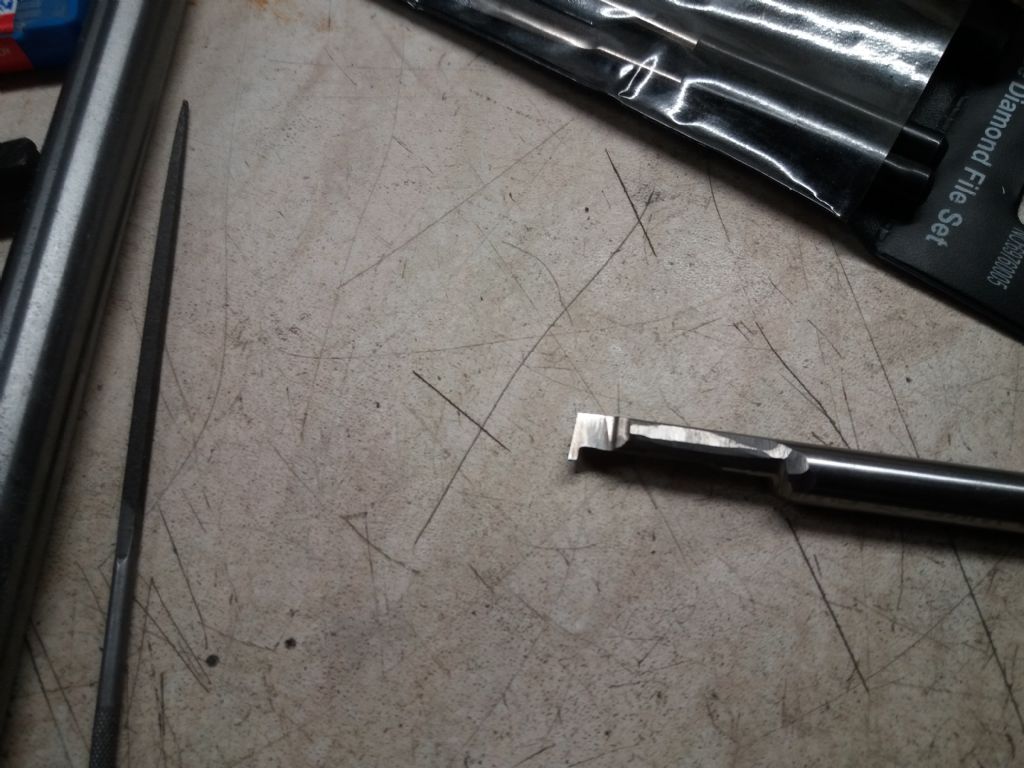As you can get a tap and your skills have have yet to reach the stage of accurately grinding a suitable single point tool the simplest approach would be to grind a close, but undersize, tool and finish off with the tap. Something like Davids made a bit narrower than the tip of the thread should do fine. But a bit of taper on the sides wouldn't hurt.
With most of the material pre-removed the tap won't have to work too hard and so should go through fine. I'd arrange to end load it in some way so it doesn't have to do all the work of pulling itself through as well as cut the thread. Maybe get get creative with the drill press to help push.
Adjusting fit by turning a few thou out of an undersize nut is a tricky job. You can't see what's going on and any slight error in the angle of the tool sides, whether in the grind or not quite dead nuts parallel set up, makes the whole thing a bit of a lottery. On a small machine there is a tendency to cut the first turn or so slightly oversize due to the tool initially only working on one side as it enters the job. Large machines generally have enough mass not to suffer but small ones tend to ease back a thou or two under the initial load. Net result is that the first thread is still a touch tight when the rest of the nut is fine. Probably best to make the nut overlong and, when down to the final few cuts, initially just do the first turn, withdraw the tool and check the whole nut before a full pass. Odds are the first turn won't end up all that wonderful so if the nut is overlong it can easily be cut off.
Personally I'd just make the nut to size with the tap and make a new screw to fit. With external threads you can see what's going on so its all much easier. Screws invariably wear unevenly so making a nut to fit a whole screw with minimal backlash isn't really possible.
Hafta say that when I put my Clarkson into service I said "Should really make a new feed screw." as this one is sloppy. 20 years on and multiple coats of looking at the old screw is still working well enough to be going on with. Its more likely to get a DRO than a new screw and nut pair.
Clive
Edited By Clive Foster on 10/11/2021 10:19:07
John Reese.






